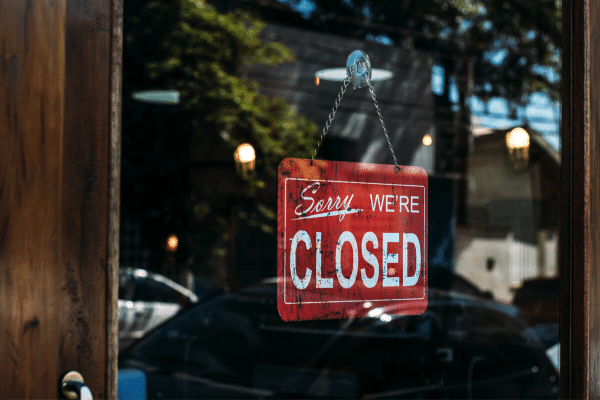
COVID-19 has brought our world to a standstill, and now after a Stop-the-Spread, Flattening-the-Curve, Shelter-in-Place point in time, our nation is looking at methods to responsibly re-open the economy and return life with economic well-being.
These actions impact all of us. How do we get people back-to-work? Children back in school? Visit friends, family, or a favorite restaurant? Haircut? And how do we do it so safely?
DR. NINA’S WHAT YOU NEED TO KNOW: About Staying Safe and Healthy During this Phase of Re-Openings
Being Informed and Vigilant will Help You Manage Proper Precautions.
Even with best practices in re-opening the economy, our public interfaces everywhere will (and must) be much different. Unlike other storms we have weathered, where in the aftermath we’re focused on re-building, with COVID19, we are still fighting against its spread, subsequent outbreaks – with no approved treatment-specific for COVID-19 or a vaccine.
Re-Opening: We’re Not Without Guidance.
The White House released Guidelines for Opening Up America Again (https://www.whitehouse.gov/openingamerica/), a three-phased approach based on the advice of public health experts. These steps were created to help state and local officials provide guidance as they reopen their economies, get people back to work, and continue to protect American lives. OSHA has also prepared a comprehensive guide covering procedures to follow.
Amidst controversy and uncertainty as to when both “essential” and “non-essential” businesses will reopen, one thing is certain: at some point all businesses who have survived the crisis will reopen. And each must draw on the ways that essential businesses have responsibly continued operations over the past weeks with adapting by:
- Taking aggressive measures for the safety of workers and customers and developing new protocols, while continuing operations
- Maintaining timely, clear communications to meet the challenges
The purpose of guidance is just that, to offer direction and provide a framework for best practices in the re-opening phase. But as the saying goes, the devil is in the details, and not every business, organization, institution – or, every area throughout the country — are the same and not every opening scenario can align with every other, at the same time.
Easing of Travel/Work Restrictions Does Not Mean Covid-19 has Disappeared.
No one will not be re-entering businesses under normal conditions. COVID-19 is still in the picture. Experts see this the management phase of the crisis, lasting well into 2021, consisting of re-organizing how we work, travel, congregate, eat, move and connect.
New Rules:
Much of the fabric of public interfaces, from checkouts to shaking hands to meetings to getting gas has changed during this pandemic. And this will be reflected in the physical marketplace, too.
The top priority across all sectors of reopening, is to ensure COVID-19 safety protocols for workers, customers, and visitors—including actively supporting the guidelines and understandings, limiting the number of people in a closed space, partitioning between customers and workers, monitoring employee’s health, regularly cleaning surfaces and strengthening hygiene procedures (e.g., providing hand sanitizer, sinks/soap/water, and personal protective equipment). And, special accommodations need to be considered for personnel who are members of a vulnerable population.
Temperature checks may be implemented for visitors entering buildings. New technologies are fast developing to quickly screen the temperature of many people at a time via heat-detection cameras, while connecting findings to a laptop or a tablet in real time.
Be Vigilant and Stay Informed.
COVID19 spreads mainly from person-to-person, but also via surfaces. New research warns it can be transmitted easily by talking. So, as you step into the new phases of re-opening, it’s most important to be vigilant in protecting yourself and others. Following the CDC guidelines, you should:
- Wash your hands, often and thoroughly with soap and water (20 seconds). And too, after sneezing, blowing your nose or touching surfaces. If soap/water are not available, use a hand sanitizer with at least 60% alcohol.
- Avoid touching your eyes, nose, and mouth with unwashed hands
- Wear a protective face mask covering your mouth and nose when out in public. Cloth face coverings should not be placed on young children under age 2, anyone who has trouble breathing, or is unconscious, incapacitated or otherwise unable to remove the mask without assistance.
- Maintain strict social distancing protocols- stay at least 6 feet from other people
- Avoid congregating/engaging in common areas or large groups
- Clean AND disinfect frequently touched surfaces, often (use detergent or soap and water prior to disinfection)
- Avoid contact with people who are sick, even inside your home
- Respect your state and local recommendations
- Maintain a healthy diet, exercising routinely along with quality sleep.
- Taking time for healthy self-care — physically, mentally and emotionally.
And please maintain careful measures knowing that COVID19 can be transmitted by others, completely unknowingly, termed “Silent Spreaders.” There are three categories:
- Asymptomatic: People carrying the virus but never having any symptoms. Testing would be the only way to confirm but people without symptoms rarely seek testing.
- Presymptomatic. People infected that are incubating the virus but don’t yet show symptoms. Once infected with this virus, it can take 5-14 days, for any symptoms to appear, allowing them to unknowingly spread it to others, who can become seriously ill.
- Very mildly symptomatic. People who may feel slightly unwell but continue to be in contact with others, often thinking “it’s nothing” or, “just a little cold” often powering through, going to work and public places. . . infecting others, who can become far sicker. This doesn’t really count as ‘silent transmission,’ because there’s some sign the virus could be present. With even a mild cough, low fever, or any flu symptoms, assume you have COVID-19 and isolate yourself from others right now.
This pandemic is not a one-time event that we’ve weathered. It’s an ongoing, a developing situation with lots of unknowns and challenges. Reducing the risk of exposure to COVID-19 by carefully managing these measures is an essential part of reopening public spaces. Every American has been called upon to slow the spread of the virus and care for our communities through social distancing and preventive hygiene. Everyone has a role in making sure our communities are as safe as possible to reopen and remain open.
Dr. Nina Radcliff is dedicated to her profession, her patients and her community, at large. She is passionate about sharing truths for healthy, balanced living as well as wise preventive health measures.
She completed medical school and residency training at UCLA and has served on the medical faculty at The University of Pennsylvania. She is a Board Certified Anesthesiologist. Author of more than 200 textbook chapters, research articles, medical opinions and reviews; she is often called upon by media to speak on medical, fitness, nutrition, and healthy lifestyle topics impacting our lives, today.
Dr. Nina Radcliff is dedicated to her profession, her patients and her community, at large. She is passionate about sharing truths for healthy, balanced living as well as wise preventive health measures.
She completed medical school and residency training at UCLA and has served on the medical faculty at The University of Pennsylvania. She is a Board Certified Anesthesiologist. Author of more than 200 textbook chapters, research articles, medical opinions and reviews; she is often called upon by media to speak on medical, fitness, nutrition, and healthy lifestyle topics impacting our lives, today.

































